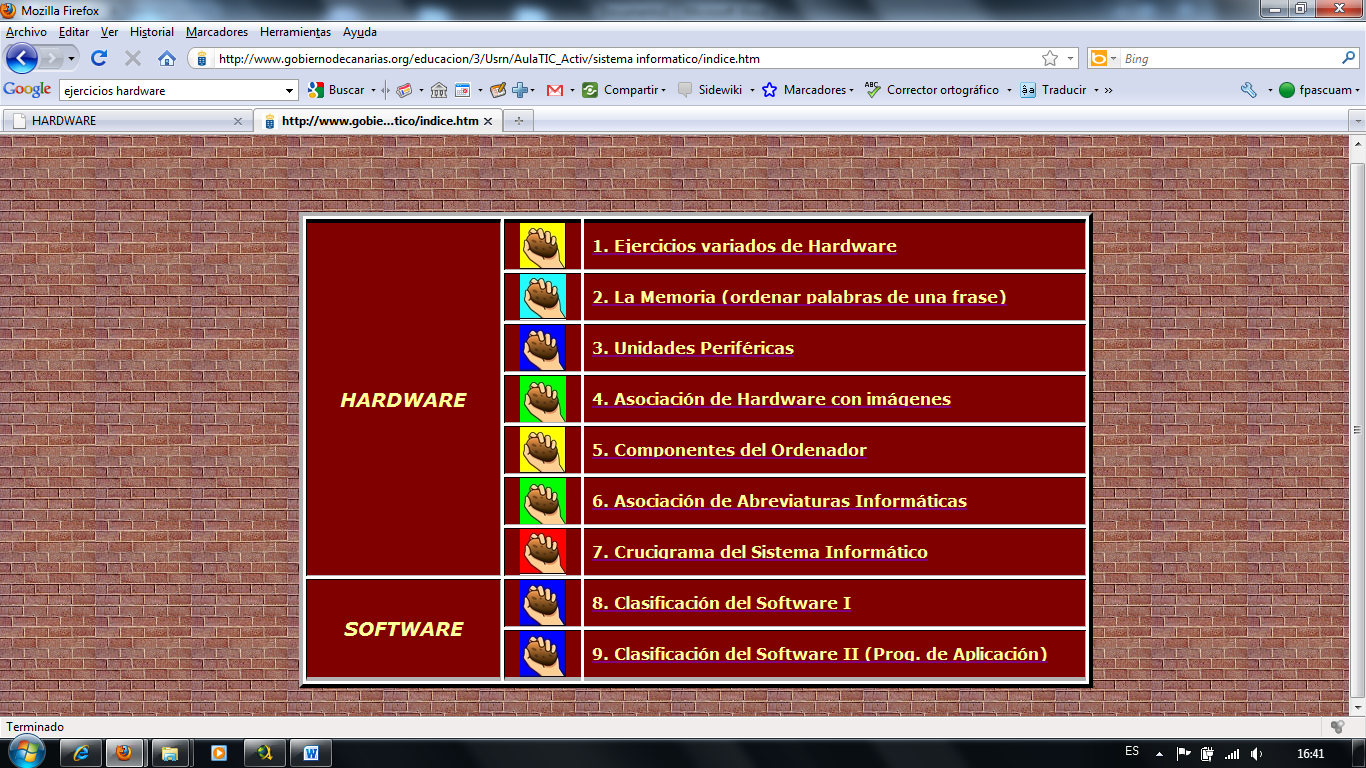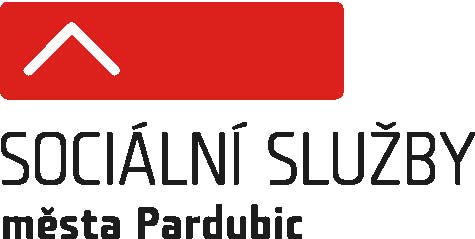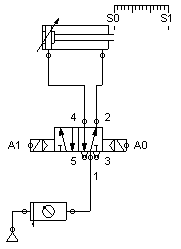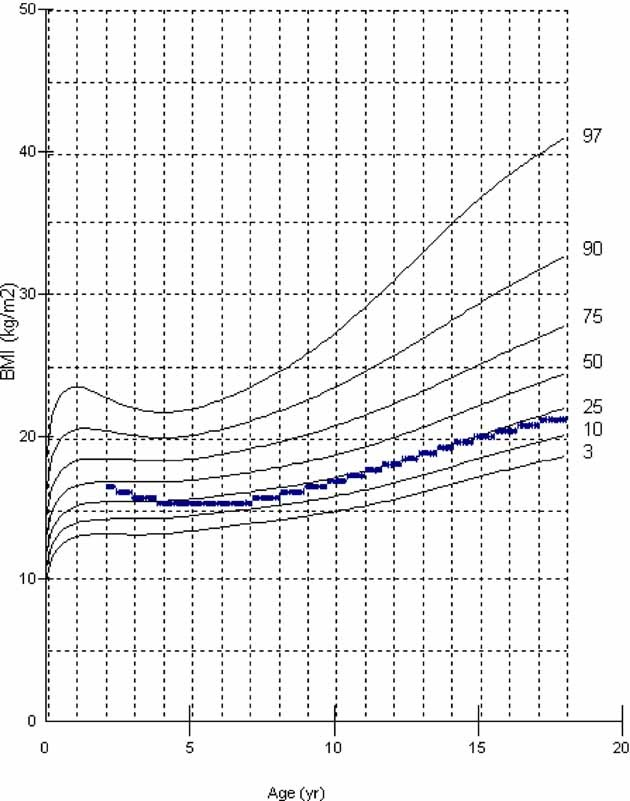A SAMPLING OF WHAT WE KNOW ABOUT LEARNING FROM
1089 SAMPLING METHODS 7199 7199 EXHIBITS EXHIBIT 12014 WQ FORM AEA SUWA OPPORTUNISTIC WATER QUALITY SAMPLING
3 TRIGAS ULTIMA X3 SAMPLING SYSTEM MODBUS RTU OUTPUT
36 KONSEP POPULASI DAN SAMPLING SERTA PERHITUNGAN VARIANS OLEH
4 LEVELS OF MEASUREMENT DEFINITION OF SAMPLING ERROR DEFINITION
4 RULES OF SAMPLING DISTRIBUTIONS RECALL THAT A SAMPLING
A SAMPLING OF WHAT WE KNOW FROM CROSS-DISCIPLINE SCHOLARSHIP OF TEACHING AND LEARNING AND EDUCATIONAL RESEARCH
A SAMPLING OF WHAT WE KNOW ABOUT LEARNING FROM SCHOLARSHIP OF TEACHING AND LEARNING AND EDUCATIONAL RESEARCH
(Handout by Kathleen McKinney, Illinois State University, [email protected])
Below is a summary of some practical, evidence-informed knowledge about teaching and learning. Note the overlap among the implications for teaching that occurs across sources. Also included is a brief bibliography of these and other useful sources on learning.
How Learning Works. List of the seven research-based principles for improving learning from Susan Ambrose, et. al 2010. How Learning Works: 7 Research-Based Principles for Smart Teaching. Jossey-Bass (pages 4-6). Book contains practical suggestions for teaching related to these principles.
“Students’ prior knowledge can help or hinder learning.”
“How students organize knowledge influences how they learn/apply what they know.”
“Students’ motivation determines, directs, and sustains what they do learn.”
“To develop mastery, students must acquire component skills, practice integrating them, and know when to apply what they have learned.”
“Goal-directed practice coupled with targeted feedback enhances the quality of students’ learning.”
“Students’ current level of development interacts with the social, emotional, and intellectual climate of the course to impact learning.”
“To become self-directed learners, students must learn to monitor and adjust their approaches to learning.”
Academically Adrift from Richard Arum and Josipa Roska. Academically Adrift: Limited Learning on College Campuses. 2011. University of Chicago. Methodologically unusual study of actual changes in learning during the first two years of college using a sample of 2,362 students at 24 four-year colleges and universities. Changes in critical thinking, complex reasoning, and writing were measured with the Collegiate Learning Assessment. Controlling for many individual differences, institutional differences, and CLA pre-test score, significant (though small) improvements in learning were associated with the following:
Believing faculty at that institution hold high expectations of students.
Taking more classes that require at least 40 pages of reading per week and 20 pages of writing during the semester.
Greater number of hours of out-of-class study time—studying alone.
What the Best College Teachers Do. Summary of conclusions from Ken Bain. What the Best College Teachers Do. 2004. Harvard University Press. (pages 15-19). Conclusions based on intensive interviews and observations of some of the best (based on their ability to produce significant learning) teachers in the nation in higher education.
1. Outstanding Teachers Know their Subjects Well -They are active in their discipline, follow important developments within their fields, do research/scholarship, read extensively, work with colleagues…They are also able to simplify complex topics of the discipline. They had an intuitive understanding of learning and saw learning in terms of major, long-term influences on students’ feelings, knowledge, and actions.
2. Outstanding Teachers are Scholarly Teachers -They treat their teaching as intellectual challenges as important as their disciplinary scholarship. They use inquiry into learning and begin with questions about student learning objectives.
3. The Best Teachers Expect “More” - They challenge students but have learning objectives that focus on learning to think and act as will be needed in life.
4. The Best Teachers Create a “Natural, Critical Learning Environment” - In this environment, students learn through the use of authentic tasks and by grappling with stimulating and important questions or problems. This environment is challenging yet supportive, and learners have a sense of control, work collaboratively, receive useful feedback for improvement, and feel they will be evaluated fairly.
5. Highly Effective Teachers have a Strong Trust in Students - They believe students want to and are able to learn. They are open and honest with students and engage in appropriate self-disclosure. They treat students with respect and caring. They do not blame students.
6. Outstanding Teachers have a Strategy to Assess their Efforts and Make Changes
The faculty members use various ways to obtain feedback on their teaching and students’ learning and will adjust based on this feedback. Efforts to assess students develop from learning objectives.
Seven Principles for Good Practice in Undergraduate Education. Direct Quote Excerpt from Arthur W. Chickering and Zelda F. Gamson. The American Association for Higher Education Bulletin, March 1987. (http://honolulu.hawaii.edu/intranet/committees/FacDevCom/guidebk/teachtip/7princip.htm) “These seven principles are not ten commandments shrunk to a 20th century attention span. They are intended as guidelines… to improve teaching and learning. These principles seem like good common sense, and they are -- because many teachers and students have experienced them and because research supports them. They rest on 50 years of research on the way teachers teach and students learn, how students work and play with one another, and how students and faculty talk to each other.”
“1. Encourages Contact Between Students and Faculty. Frequent student-faculty contact in and out of classes is the most important factor in student motivation and involvement. Faculty concern helps students get through rough times and keep on working. Knowing a few faculty members well enhances students' intellectual commitment and encourages them to think about their own values and future plans.
2. Develops Reciprocity and Cooperation Among Students. Learning is enhanced when it is more like a team effort that a solo race. Good learning, like good work, is collaborative and social, not competitive and isolated. Working with others often increases involvement in learning. Sharing one's own ideas and responding to others' reactions sharpens thinking and deepens understanding.
3. Encourages Active Learning. Learning is not a spectator sport. Students do not learn much just by sitting in classes listening to teachers, memorizing pre-packaged assignments, and spitting out answers. They must talk about what they are learning, write about it, relate it to past experiences and apply it to their daily lives. They must make what they learn part of themselves.
4. Gives Prompt Feedback. Knowing what you know and don't know focuses learning. Students need appropriate feedback on performance to benefit from courses. When getting started, students need help in assessing existing knowledge and competence. In classes, students need frequent opportunities to perform and receive suggestions for improvement. At various points during college, and at the end, students need chances to reflect on what they have learned, what they still need to know, and how to assess themselves.
5. Emphasizes Time on Task. Time plus energy equals learning. There is no substitute for time on task. Learning to use one's time well is critical for students and professionals alike. Students need help in learning effective time management. Allocating realistic amounts of time means effective learning for students and effective teaching for faculty. How an institution defines time expectations for students, faculty, administrators, and other professional staff can establish the basis of high performance for all.
6. Communicates High Expectations. Expect more and you will get more. High expectations are important for everyone -- for the poorly prepared, for those unwilling to exert themselves, and for the bright and well motivated. Expecting students to perform well becomes a self-fulfilling prophecy when teachers and institutions hold high expectations for themselves and make extra efforts.
7. Respects Diverse Talents and Ways of Learning. There are many roads to learning. People bring different talents and styles of learning to college. Brilliant students in the seminar room may be all thumbs in the lab or art studio. Students rich in hands-on experience may not do so well with theory. Students need the opportunity to show their talents and learn in ways that work for them. Then they can be pushed to learn in new ways that do not come so easily.”
Taking Stock of Research on Teaching and Learning. Summary and/or quotes of key findings from chapters synthesizing empirical research on teaching and learning in higher education from Hughes, J. Christensen and Mighty, J. (eds.) (2010). Taking Stock: Research on Teaching and Learning in Higher Education. Montreal and Kingston: Queens’ Policy Study Series, McGill-Queen’s University Press.
Four key findings/observations gleaned from the chapters in the book (pages 262-263; 275):
Students vary in their approaches to learning (e.g., deep vs. surface).
These variations are, in part, a result of features of the learning context and, in particular, the situation and opportunities faculty members provide (e.g., active learning, collaboration promote deep approaches).
The above are important because variations in student approaches to learning are related to actual learning outcomes (e.g., deep approaches are related to more meaningful, long lasting, transferable learning).
“Most importantly, when faculty adopt active-learning pedagogies, students are more likely to engage in deep-learning approaches, leading to improved mastery and retention of knowledge and skills, and more sophisticated learning approaches.”
How People Learn. Summary of practical implications from National Research Council. (1999). How People Learn: Bridging Research and Practice. Washington, DC: National Academy Press. (pages 10-17).
“Draw out and work with the preexisting understandings” that students bring with them. These ideas and conceptions about the world and how things function must be “engage” or students will likely have difficulty understanding new information and concepts beyond surface short-term learning.
“Teach some subject matter in depth, providing many examples in which the same concept is at work…” Research demonstrates that for students to develop competence in “an area of inquiry”, they must have three things: 1. “a deep foundation of factual knowledge,” 2. an understanding of “facts and ideas in the context of a conceptual framework,” and 3. the ability to “organize knowledge in ways that facilitate retrieval and application.”
Integrate the teaching of metacognitive skills into the course and curriculum in multiple areas. Using metacognitive strategies will assist students in becoming more autonomous learners through clarifying and reflecting on learning goals and their achievement.
Helping to Motivate Students to Enhance Learning. Summary of practical implications from Marilla Svinicki. 2004. Learning and Motivation in the Post-Secondary Classroom. Anker. (pages 222-235). These principles are based on the ideas and research from several major theories of human learning.
1. Emphasize a Few Key Ideas as Cognitive Theory suggests that key ideas must be made explicit and stressed in the overall course and each session.
2. Be Aware of Prior Knowledge because theories indicate that what students learn is influenced by what they bring to the class. There are various sources of data for this including pretests or prior knowledge surveys given by the instructor.
3. Tap into Motivational Sources and think about what motivations students may bring to your course and what you can do to enhance that. Provide reasonable choice and control to students. Help students make connections between what they are learning and their lives. Provide early opportunities for success in the course.
4. Build Structural Knowledge to Achieve Understanding by using various strategies to help students see and build interconnections among ideas and/or skills and/or applications in the course. They need an overall, meaningful structure.
5. Structure Learning to Support Encoding of Content; that is, use encoding strategies (e.g., organizational encoding, elaboration encoding) to promote “deep: learning.
6. Use Modeling to Teach Skills by demonstrating for students the thinking or skills you wish them to learn and practice. Use peers as models as well.
7. Give Lots of Active, Coached Practice, providing opportunities for active, hands-on practice with assistance and feedback from faculty and peers.
8. Teach in Ways that Promote Transfer so as to provide opportunities, modeling, and practice for students to apply knowledge and skills to novel situations or problems.
9. Help Students become Aware of their Own Learning Strategies through self-analyis and self-reflection to become more aware of how they learn and how they can use that knowledge to improve their learning.
10. Respect Individual Differences in Learning and allow flexibility and choice to make diversity in learning an asset.
Learner-Centered Teaching. Summary of five key changes in practice needed to promote such learning from Maryellen Weimer, 2002. Learner-Centered Teaching. San Francisco: Jossey-Bass. More specific, practical applications of these practices can be found in Chapters 7-9 on implementaton.
The Balance of Power – shift from teacher to students
The Function of Content – focus on deep learning, allow students to actively manipulate content
The Role of the Teacher – teachers as guides, facilitators, only one source of expertise; focus on learning not teaching
The Responsibility of Learning – students as responsible; help support autonomous, self-directed, life-long learning
Evaluation Purpose and Processes – evaluation and assessment as tools to promote learning; importance of self-assessment
Learning and the Brain. Summary of some implications from J. E. Zull, 2002. The Art of Changing the Brain: Enriching the practice of teaching by exploring the biology of learning. Sterling, VA: Stylus Publishing.
The importance of connecting learning to students’ prior knowledge.
Using emotions appropriately to enhance learning.
Varying pedagogy to trigger activity in different parts of the brain.
The importance of the the visual sense.
Showing students, role-modeling, can be important.
The need for active learning- students should “do.”
Students should have some control.
Students should reflect.
Selected Resources on Learning and on Teaching to Promote Learning
Ambrose, S., Bridges, M. W., Lovett, M. C., DiPietro, M., and Norman, M. K. (2010). How Learning
Works: 7 Research-Based Principles for Smart Teaching. San Francisco: Jossey-Bass.
Arum, R., & Roksa, J. (2011). Academically Adrift: Limited Learning on College Campuses. University of
Chicago Press.
Astin, A. (1997). What matters in College: Four critical years revisited. San Francisco: Jossey-Bass.
Bain, K. (2004). What the best college teachers do. Cambridge, MA: Harvard University Press.
Baxter Magolda, M.B. (2000). Creating Contexts for Learning and Self-Authorship: Constructive-Developmental Pedagogy. Nashville: Vanderbilt University Press.
Braskamp, L. A., Trautvetter, L. C., & Ward, K. (2006). Putting Students First: How Colleges Develop
Students Purposely. Bolton, MA.: Anker.
Halpern, D. F. & Hakel, M. D. (eds.) (2002). Applying the Science of Learning to University Teaching and
Beyond (Number 89). San Francisco, CA: Jossey-Bass.
Hughes, J. Christensen and Mighty, J. (eds.) (2010). Taking Stock: Research on Teaching and Learning in
Higher Education. Montreal and Kingston: Queens’ Policy Study Series, McGill-Queen’s University Press.
Kuh, G.D., Kinzie, J., Schuh, J.H., Whitt, E.J., and Associates. (2005). Student Success in College:
Creating Conditions that Matter. San Francisco: Jossey-Bass.
Leamnson, R. (1999). Thinking about teaching and learning. Sterling, VA: Stylus.
Light, R. J. (2001). Making the Most of College. Cambridge, MA: Harvard University Press.
Nilson, L.B. (1998). Teaching at its Best: A Research-Based Resource for College. Bolton, MA: Anker.
Merriam, S.B., Caffarella, R.S., and Baumgartner, L.M. (2007). Learning in Adulthood: A Comprehensive
Guide, 3rd ed. Jossey Bass.
National Research Council. (1999). How People Learn: Bridging Research and Practice. Washington, DC:
National Academy Press.
Pescosolido, B. A. and Aminzade, R. (1999). The social Worlds of Higher Education. Thousand Oaks: Pine
Forge Press.
Svinicki, M.D. (2004). Learning and Motivation in the Postsecondary Classroom. Bolton, MA: Anker.
Tagg, J. (2003). The Learning Paradigm College. Bolton, MA: Anker.
Weimer, M. (2002). Learner-Centered Teaching: Five Key Changes to Practice. San Francisco: Jossey-
Bass.
Zull, J. E. (2002). The Art of Changing the Brain: Enriching the Practice of Teaching by Exploring the
Biology of Learning. Sterling, VA: Stylus Publishing.
4807CCL AGENCY HOME RANDOM SAMPLING 7 4424 SELECTING CPA
A SAMPLING OF WHAT WE KNOW ABOUT LEARNING FROM
ACTIVITY ID 07SCC04 USGS CMG FACS SAMPLING LOG EQUIPMENT
Tags: about learning, thinking about, about, sampling, learning
- SETTINGS FOR JGRASP (3 PAGES) ON THE MENU BAR
- PRESSE UND INFORMATION ULRIKE POTT (LTG) TEL 030
- TÁCTICA DEL JUEGO DE DOBLES ANTES DE SALTAR A
- T C KIRIKKALE BELEDİYE BAŞKANLIĞI YAZI İŞLERI MÜDÜRLÜĞÜ SAYI
- AFFAIRE SUIVIE PAR MMEMR [NOM PRÉNOM]
- THE ELLER COAT OF ARMS BY HARVEY W POWERS
- OMFATTENDE AVTALEERKLÆRING OM KONFIDENSIALITET MM A [OG REPRESENTANTER FOR
- 1 UNIDAD 2 FILOSOFÍA COMENTARIO DE TEXTO UN HELADO
- TECHNICAL GUIDE – SECTION III CONSERVATION SYSTEMS CONSERVATION SYSTEMS
- CURS 20182019 CATEQUESI CURS EDAT HORARI
- !DOCTYPE HTML PUBLIC W3CDTD HTML 401EN HTTPWWWW3ORGTRHTML4STRICTDTD HTML HEAD
- 19 PADRE FRANCISCO JORDÁN APÓSTOL DEL DIVINO SALVADOR Y
- DATA O Ś W I A D C
- FINANTZA ZUZENDARITZA D IRECCIÓN FINANCIERA IJENTEA 1 TEL
- DIAGNÓSTICO MEDIANTE RM DE LA ARTROPATÍA INICIAL EN NIÑOS
- (IME I PREZIMENAZIV PRAVNE OSOBE OIB) (ADRESA)
- NOVEMBER 15 2012 ( ) ACTION REQUIRED (X) INFORMATIONAL
- NAGYMAROS VÁROS ÖNKORMÁNYZATA ADATBEJELENTÉS TELEKADÓRÓL (BENYÚJTANDÓ AZ INGATLAN FEKVÉSE
- NOMBRE DE LA ACTIVIDAD ENCUESTA PREVIA A LA ACTIVIDAD
- NASJONALE FAGLIGE RETNINGSLINJER IS2542 NASJONALT HANDLINGSPROGRAM MED RETNINGSLINJER FOR
- TÍTULO SHELL HELIX MAKEOVER CHALLENGE– VERSIÓN FINAL DURACIÓN
- MALAS PRÁCTICAS Y DEFICIENCIAS NORMATIVAS DENUNCIADAS EN EL INFORME
- PROGRAMA DE MOVILIDAD AITANA – ERASMUS + PRÁCTICAS GUÍA
- MARIO KART RACER OFFICIAL RULES THIS EVENT IS TO
- PIECZĘĆ SZKOŁY UZASADNIENIE OCENY NIEDOSTATECZNEJ BRAKU KLASYFIKACJI Z
- HARMONOGRAM PRZEBIEGU POSTĘPOWANIA HABILITACYJNEGO DR ROMANA ZDYBLA 14072016 DATA
- APPLICATION FOR BIRTH REGISTRATION (NOTICE OF BIRTH) IN TERMS
- DRIVER SAFETY A NEW AND BETTER APPROACH BY THOMAS
- SEPHORA L’ENSEIGNE DE LA GRANDE DISTRIBUTION DE LA BEAUTÉ
- SIGNALI I SUSTAVI PITANJA ZA USMENI PITANJA VEZANA UZ
 ANEXO D CONDICIONES PARA EL SUMINISTRO DE SEÑALIZADORES DE
ANEXO D CONDICIONES PARA EL SUMINISTRO DE SEÑALIZADORES DERODWELL HOUSE JOB DESCRIPTION NO J04 EFFECTIVE DATE 25092020
 CXXXV CERTAMEN OFICIAL DE JOTA ARAGONESA PREMIO EXTRAORDINARIO BAILE
CXXXV CERTAMEN OFICIAL DE JOTA ARAGONESA PREMIO EXTRAORDINARIO BAILE ACTIVIDAD 4 HARDWARE DEL PC REALIZAR LOS EJERCICIOS REFERENTES
ACTIVIDAD 4 HARDWARE DEL PC REALIZAR LOS EJERCICIOS REFERENTESVENTURA COLLEGE MUSIC DEPARTMENT FALL 2020 PERFORMANCE SUMMARY
HAKİM ŞİRKET BAĞLI ORTAKLIK RAPORU HAKİM ŞİRKET RAPORU HAKİM
 SOCIÁLNÍ SLUŽBY MĚSTA PARDUBIC DOMOV PRO SENIORY DUBINA PARDUBICE
SOCIÁLNÍ SLUŽBY MĚSTA PARDUBIC DOMOV PRO SENIORY DUBINA PARDUBICE DEVELOPMENTAL HISTORY CHILD’S NAME DATE OF BIRTH HISTORY TAKEN
DEVELOPMENTAL HISTORY CHILD’S NAME DATE OF BIRTH HISTORY TAKEN HIDRONICĂ ŞI PNEUTRONICĂ LUCRAREA NR 14 LUCRAREA NR 14
HIDRONICĂ ŞI PNEUTRONICĂ LUCRAREA NR 14 LUCRAREA NR 14 WEIGHT CHART FOR FEMALES WITH MORQUIO SYNDROME
WEIGHT CHART FOR FEMALES WITH MORQUIO SYNDROME KRALJEVICA 10 SVIBNJA 2012 GODINE BROJ 20052012 PREDMET
 M USIC S1 WEEK 2 HOME LEARNING MY FAVOURITE
M USIC S1 WEEK 2 HOME LEARNING MY FAVOURITE TOT EL DOCUMENT HA DE TENIR 2 CM DE
TOT EL DOCUMENT HA DE TENIR 2 CM DE VALIDATION PROCESS QUESTION HOW DO I VALIDATE MY XML
VALIDATION PROCESS QUESTION HOW DO I VALIDATE MY XMLSHUFFLEBOARD INTRODUCTION SHUFFLEBOARD IS OFTEN THOUGHT OF AS A
 SUSTAINABLE DEVELOPMENT ACCREDITATION SCHEME REQUIREMENTS THE GOLD STANDARD’S
SUSTAINABLE DEVELOPMENT ACCREDITATION SCHEME REQUIREMENTS THE GOLD STANDARD’S GREEN FINS SLOGAN CONTEST CALL FOR ENTRIES BACKGROUND
GREEN FINS SLOGAN CONTEST CALL FOR ENTRIES BACKGROUND FOR OFFICIAL USE ONLY 1 INTRODUCTION ANSTO AS
 DOCUMENTO ELABORADO CON LA ASESORÍA DE JUSTIFICACIÓN EN
DOCUMENTO ELABORADO CON LA ASESORÍA DE JUSTIFICACIÓN ENTHE WATER BOARD OF THE CITY OF VINCENT P